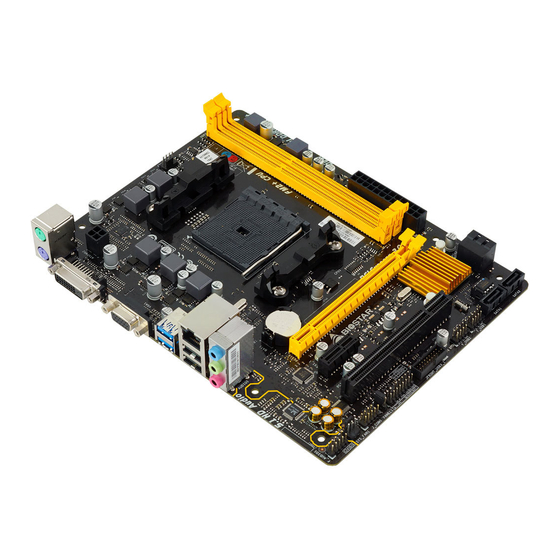
Table of Contents
Advertisement
This equipment has been tested and found to comply with the limits of a Class B digital device,
pursuant to Part 15 of the FCC Rules. These limits are designed to provide reasonable protection
against harmful interference in a residential installation. This equipment generates, uses, and can
radiate radio frequency energy and, if not installed and used in accordance with the instructions,
may cause harmful interference to radio communications. There is no guarantee that interference
will not occur in a particular installation.
The vendor makes no representations or warranties with respect to the contents here and
specially disclaims any implied warranties of merchantability or fitness for any purpose. Further
the vendor reserves the right to revise this publication and to make changes to the contents here
without obligation to notify any party beforehand.
Duplication of this publication, in part or in whole, is not allowed without first obtaining the
vendor's approval in writing.
The content of this user's manual is subject to be changed without notice and we will not be
responsible for any mistakes found in this user's manual. All the brand and product names are
trademarks of their respective companies.
FCC Information and Copyright
Dichiarazione di conformità sintetica
Ai sensi dell'art. 2 comma 3 del D.M. 275 del
30/10/2002
Si dichiara che questo prodotto è conforme
alle normative vigenti e soddisfa i requisiti
essenziali richiesti dalle direttive
2004/108/CE, 2006/95/CE e 1999/05/CE
quando ad esso applicabili
Short Declaration of conformity
We declare this product is complying with the
laws in force and meeting all the essential
requirements as specified by the directives
2004/108/CE, 2006/95/CE and 1999/05/CE
whenever these laws may be applied
Advertisement
Table of Contents

Summarization of Contents
Chapter 1: Introduction
1.1 Before You Start
Essential pre-installation guidelines for a safe and successful setup.
1.2 Package Checklist
Details the contents of the motherboard package for user verification.
1.3 Specifications
Comprehensive technical specifications of the motherboard, including CPU, memory, and ports.
1.4 Rear Panel Connectors
Diagram and explanation of the external ports and connectors on the motherboard's rear panel.
1.5 Motherboard Layout
Visual guide identifying key components and headers on the motherboard.
Chapter 2: Hardware Installation
2.1 CPU Installation
Step-by-step instructions for correctly installing the Central Processing Unit (CPU).
2.2 Heatsink Installation
Guide on how to properly install the CPU heatsink and fan assembly.
2.3 Cooling Fan Connection
Instructions for connecting CPU and system fans to the motherboard headers.
2.4 System Memory Installation
Detailed steps for installing DDR3 memory modules into the DIMM slots.
2.5 Expansion Slots
Information on PCI, PCIe x1, and PCIe x16 slots for expansion cards.
2.6 Jumper and Switch Settings
Explanation of jumper settings, focusing on CMOS clearing procedures.
2.7 Headers and Connectors
Details on ATX power connectors, front panel headers, SATA, and USB connectors.
Chapter 3: UEFI BIOS & Software
3.1 UEFI BIOS Setup
Guide on accessing and navigating the UEFI BIOS setup utility for system configuration.
3.2 BIOS Update Procedures
Instructions on how to update the motherboard's BIOS using provided utilities.
3.3 Software Utilities
Information on installing and using bundled software utilities like BIOScreen and eHot-Line.
Chapter 4: Useful Help
4.1 Driver Installation
Steps for installing necessary drivers from the included setup DVD for optimal performance.
4.2 AMI BIOS Beep Codes
Explains AMI BIOS beep codes used for system diagnostics and error reporting.
4.3 Troubleshooting
Common probable issues and their corresponding solutions for system operation.
CPU Overheating Issues
Guidance on identifying and resolving CPU overheating shutdowns and protection functions.
4.4 RAID Functions
Explanation of RAID configurations (RAID 0, 1, 10), features, and benefits.
4.5 AMD Dual Graphics Technology
Details on setting up and supported combinations for AMD Dual Graphics technology.












Need help?
Do you have a question about the A70MG PRO and is the answer not in the manual?
Questions and answers